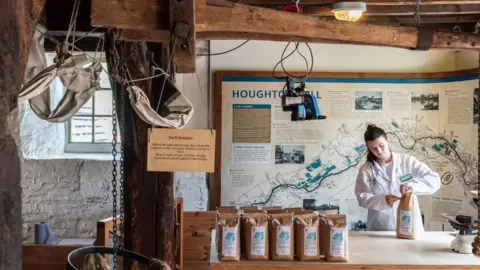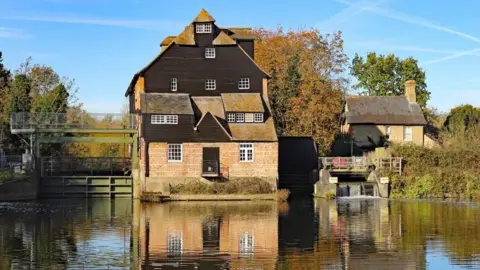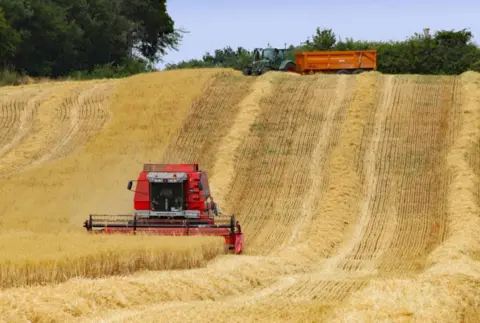Watermill revives traditional flour production
 National Trust/Paul Harris
National Trust/Paul HarrisA watermill has begun producing flour using methods dating back hundreds of years.
Houghton Mill, which dates to the 18th Century, is the last working watermill on the River Great Ouse near Huntingdon in Cambridgeshire.
It will use wheat grown at the Wimpole Estate 19 miles (30km) away.
However, the methods are not entirely traditional. When water levels are too low to power the waterwheel, a set of hydro-electrically powered millstones will be used.
 National Trust/Mike Selby
National Trust/Mike SelbyAyse Lambert, visitor experience officer at the mill, said: "The milling process is environmentally friendly. A traditional waterwheel enables the mill to produce stoneground flour."
Visitors to Houghton Mill can watch the flour being milled each Sunday, until 3 November.
National Trust said during the 18th Century there was a rapid development in mill technology and this marked the start of a very prosperous period for Houghton Mill.
Along this 70-mile (113km) stretch of the River Great Ouse there would potentially have been about 120 watermills.
 National Trust/Mike Selby
National Trust/Mike SelbyFollow Cambridgeshire news on BBC Sounds, Facebook, Instagram and X.
